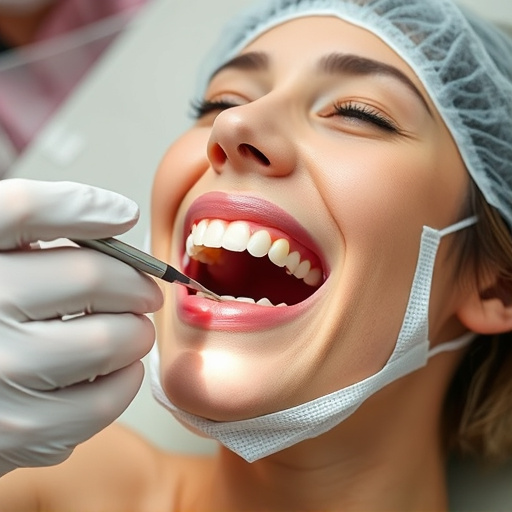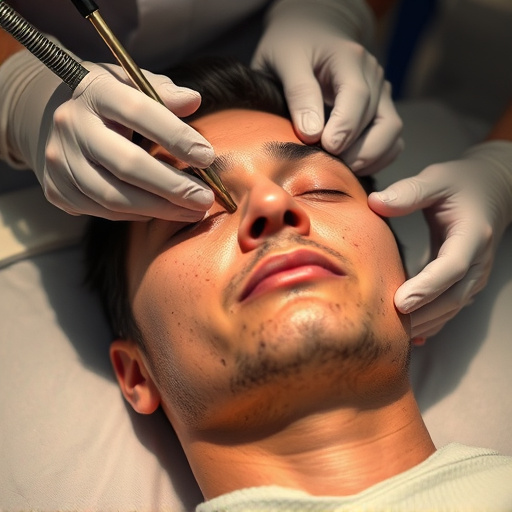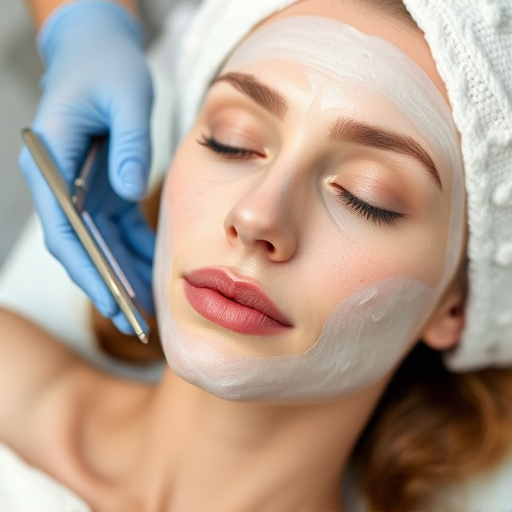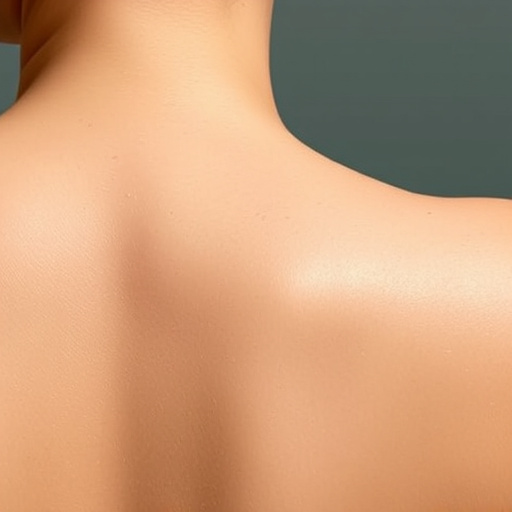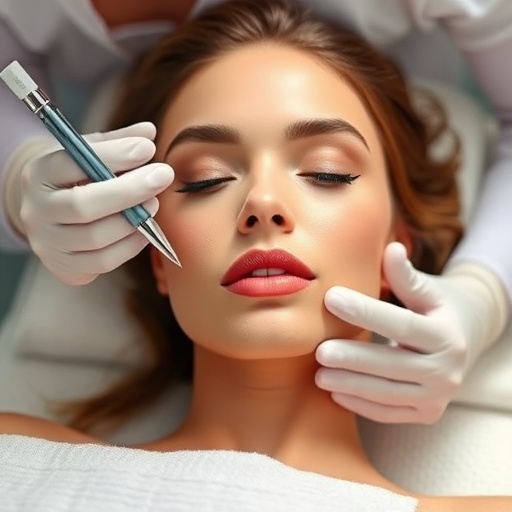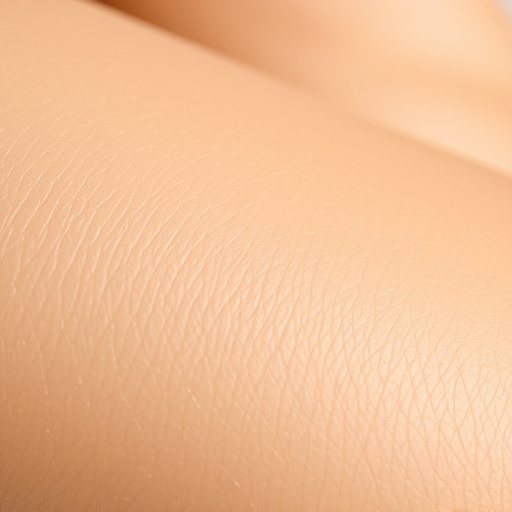Hyperpigmentation, caused by excess melanin, manifests as dark patches and is influenced by factors like sun exposure, acne treatments, and hormonal changes. It's categorized into post-inflammatory and age spots. Topical treatments with hydroquinone, retinoids, vitamin C, and kojic acid are popular, while professional procedures such as chemical peels, laser therapy, and intense pulsed light (IPL) address severe cases effectively. Skincare professionals can tailor products and recommend treatments for holistic hyperpigmentation management.
Uneven skin discoloration, often in the form of dark spots or patches, can be a common concern, but there are effective solutions available. Hyperpigmentation occurs when the skin produces excess melanin, leading to darker areas. This article explores comprehensive hyperpigmentation treatment options. We’ll delve into understanding its causes and types, starting with topical treatments that use ingredients like vitamin C, retinoids, and hydroquinone. For severe cases, professional procedures such as chemical peels and laser therapy offer advanced solutions.
- Understanding Hyperpigmentation: Causes and Types
- Topical Treatments for Hyperpigmentation
- Professional Procedures for Severe Cases
Understanding Hyperpigmentation: Causes and Types
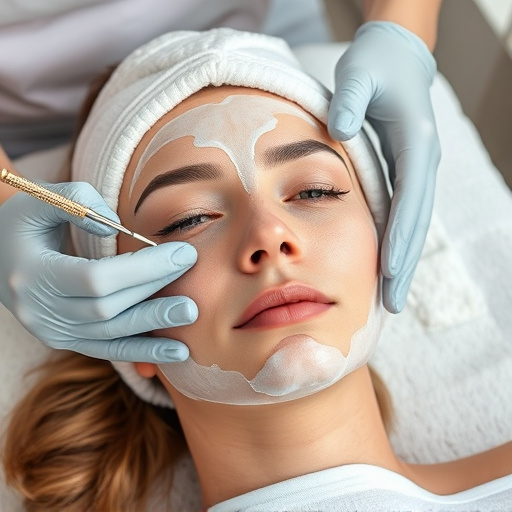
Hyperpigmentation is a common skin concern characterized by dark patches or spots that appear on certain areas of the face or body, leading to an uneven skin tone. It occurs when melanin, the pigment responsible for skin color, becomes overproduced in specific regions. Understanding the causes and types of hyperpigmentation is crucial when seeking effective hyperpigmentation treatment.
There are several factors that can contribute to its development. Acne treatments, certain medications, and even sun exposure can trigger or worsen hyperpigmentation. The two primary types include post-inflammatory hyperpigmentation, which often follows acne outbreaks or skin injuries, and age spots, commonly seen as dark patches on the face and hands due to natural aging processes. Some individuals may also experience melasma, a type of hyperpigmentation that appears during pregnancy or hormonal fluctuations. Additionally, laser hair removal and other aesthetic treatments can inadvertently cause hyperpigmentation if not performed correctly.
Topical Treatments for Hyperpigmentation
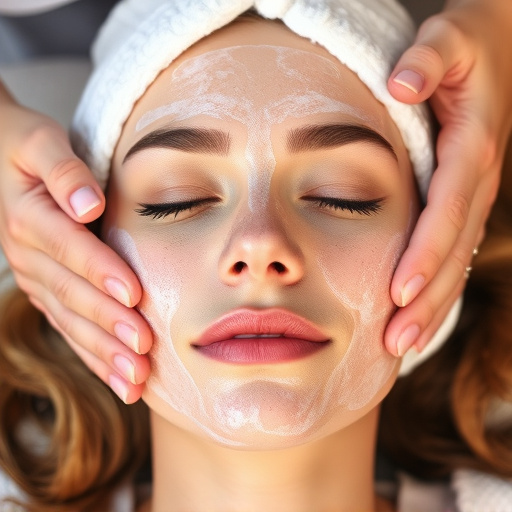
Many people turn to topical treatments as a preferred method for addressing hyperpigmentation and achieving an even skin tone. These solutions are designed to target the specific areas of discoloration, helping to lighten and brighten the skin over time. Common active ingredients in hyperpigmentation treatments include hydroquinone, retinoids, vitamin C, and kojic acid. Hydroquinone, a derivative of benzocaine, is a popular choice due to its ability to inhibit melanin production, breaking down the excess pigment that causes dark spots. Retinoids, derived from vitamin A, also play a crucial role in skin cell turnover, promoting faster exfoliation and revealing smoother, more uniform skin.
When considering topical treatments, it’s essential to opt for professional skincare products recommended by dermatologists or estheticians. These experts can analyze your skin type and condition to create a personalized skincare routine tailored to your needs. A combination of targeted serums, creams, and exfoliants can work synergistically to not only lighten hyperpigmentation but also enhance skin texture and tone, resulting in a radiant, even complexion. Additionally, some professional skincare brands offer unique formulations with ingredients like niacinamide, alpha hydroxy acids (AHAs), or peptides, which further contribute to skin tightening and a more youthful appearance.
Professional Procedures for Severe Cases
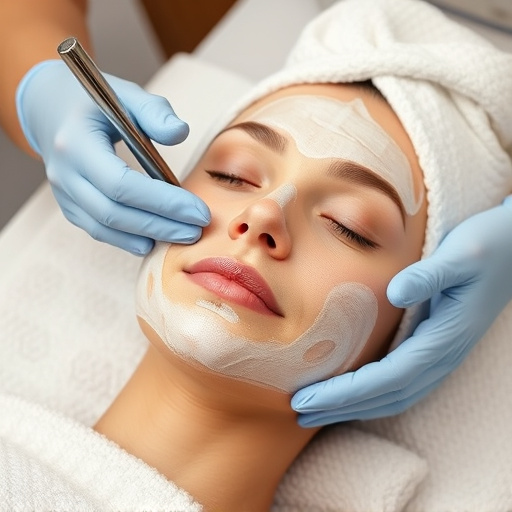
For those dealing with severe hyperpigmentation, professional procedures offer a promising solution to achieve even skin tone. Dermatologists and estheticians provide advanced treatments tailored to address deep-seated pigmentation issues. One such popular method is chemical peeling, which involves applying chemicals to the skin to lift away damaged outer layers, revealing smoother, lighter skin beneath. Laser therapy is another effective approach, using targeted beams to break up pigmented spots, encouraging collagen production and even skin tone.
In some cases, intense pulsed light (IPL) treatments can be a game-changer. IPL devices emit light that targets melanin in the skin, breaking it down without damaging the surrounding tissue. This non-invasive procedure is often combined with other hyperpigmentation treatments, such as hydrating facials or targeted acne treatments, to enhance results and provide a comprehensive skincare solution. Even laser hair removal, while primarily focused on hair reduction, can indirectly contribute to hyperpigmentation treatment by minimizing post-inflammatory darkening.
Hyperpigmentation treatment options are diverse, catering to different severity levels and skin types. For mild cases, topical treatments like hydroquinone, retinoids, and vitamin C serums can effectively reduce uneven skin discoloration. Professional procedures, such as chemical peels and laser therapy, offer more intense solutions for severe hyperpigmentation. By understanding the causes and types of hyperpigmentation, individuals can choose the most suitable hyperpigmentation treatment to achieve a more even and radiant complexion.




